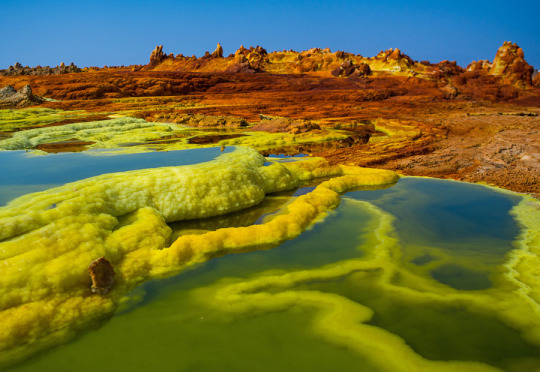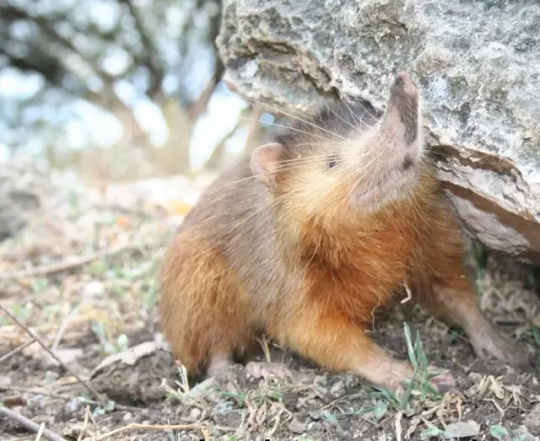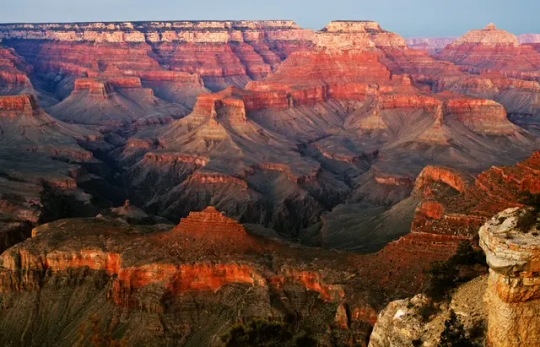#climate change
Text
Hey, happy Earth Day! Who wants to talk about climate change?
Yeah, okay, fair, I kinda figured the answer to that would be "ugh do we have to?" What if I told you I have good news though? Good news with caveats, but still good news.
What if I told you that since the Paris Agreement in 2015, we've avoided a whole degree celsius of global warming by 2100, or maybe more?

Current projections are 2.7C, which is way better than the 3-5C (with a median of 3.7C) we were expecting in 2015. It's not where we want to be - 1.5C - but it is big, noticeable progress!
And it's not like we either hit 1.5C and avoid all the big scary consequences or fail to hit 1.5C and get all of them - every tenth of a degree of warming we avoid is going to prevent more severe problems like extreme weather, sea level rise, etc.
This means that climate change mitigation efforts are having a noticeable impact! This means a dramatically better, safer future - and if we keep pushing, we could lower the amount of global warming we end up with even further. This is huge progress, and we need to celebrate it, even though the fight isn't over.
It's working. Keep going.
#hylian rambles#climate change#climate crisis#environmental issues#global warming#hope#hope for the future#hope for the planet#earth day
4K notes
·
View notes
Text
"People assume that in the 50 years since the first Earth Day we've made no progress. That we're in a worse position now than we were in the 1970s, that there's no point in environmental action," [...]
Quite the opposite is true. Climate-friendly advances that would have seemed impossible even 10 years ago are now commonplace. And three times in the past 50 years humanity has faced--and fixed--massive, man-made global environmental issues.
The fight isn't won yet, but don't forget that we have made enormous progress.
We would be in a much, much worse position if it wasn't for all the incredible work of environmental activists who came before us, most of whose names and contributions we will never know. They are the reason that we have a fighting chance now, and we owe it to them to pick up their banner and keep running.
#earth day#climate change#environment#global warming#hope#climate anxiety#climate grief#ecoanxiety#ecogrief
932 notes
·
View notes
Text
Since the 1960s, the world has seen a spike in the number of natural disasters, largely due to rising sea levels and an ever gradually increasing global surface temperature.
The good news? We’re getting better at helping each other when disasters strike.
According to a recent study from Our World In Data, the global toll from natural disasters has dramatically dropped in the last century.
“Low-frequency, high-impact events such as earthquakes and tsunamis are not preventable, but such high losses of human life are,” wrote lead authors Hannah Ritchie and Pablo Rosado.
To conduct their research, Ritchie and Rosado gathered data from all geophysical, meteorological, and climate-related disasters since 1900. That includes earthquakes, volcanic activity, landslides, drought, wildfires, severe storms, and mass floods.
In the early-to-mid 20th century, the average annual death toll from disasters was very high, often climbing to over a million.
For example, the study cites that in 1931, 2.7 million people died from the Yangtze–Huai River floods. In 1943, 1.9 million died from the Bangladeshi famine of 1943. Even low-frequency events had extreme death tolls.
“In recent decades we have seen a substantial decline in deaths,” Ritchie and Rosado observed. “Even in peak years with high-impact events, the death toll has not exceeded 500,000 since the mid-1960s.”
Why has the global death toll from disasters dropped?
There are a number of factors at play in the improvement of disaster aid, but the leading component is that human beings are getting better at predicting and preparing for natural disasters.
“We know from historical data that the world has seen a significant reduction in disaster deaths through earlier prediction, more resilient infrastructure, emergency preparedness, and response systems,” Ritchie and Rosado explained in their study.
On April 6, [2024],a 7.2 magnitude earthquake rocked the city of Hualien in Taiwan. Days later, as search and rescue continues, the death toll currently rests at 16.
Experts have praised Taiwan for their speedy response and recovery, and attributed the low death toll to the measures that Taiwan implemented after an earthquake of similar strength hit the city 25 years earlier. Sadly, on that day in 1999, 2,400 people died and 11,000 were injured.
In an interview with Al Jazeera, Wang Yu — assistant professor at National Taiwan University — said that event, known as the Chi-Chi earthquake, revolutionized the way Taiwan approached natural disasters.
“There were lots of lessons we learned, including the improvement of building codes, understanding earthquake warning signs, the development and implementation of earthquake early warning (EEW) systems and earthquake education,” said Wang.
Those same sensors and monitoring systems allowed authorities to create “shakemaps” during Hualien’s latest earthquake, which helped them direct rescue teams to the regions that were hit the hardest.
This, in conjunction with stronger building codes, regular earthquake drills, and public education campaigns, played a huge role in reducing the number of deaths from the event.
And Taiwan’s safeguards on April 6 are just one example of recent measures against disasters. Similar models in strengthening prediction, preparedness, and recovery time have been employed around the world when it comes to rescuing victims of floods, wildfires, tornados, and so on.
What else can we learn from this study?
When concluding the findings from their study, Ritchie and Rosado emphasized the importance of increasing safety measures for everyone.
Currently, there is still a divide between populations with high gross national income and populations living in extreme poverty.
Even low-income countries that infrequently have natural disasters have a much higher death rate because they are vulnerable to collapse, displacement, and disrepair.
“Those at low incomes are often the most vulnerable to disaster events; improving living standards, infrastructure, and response systems in these regions will be key to preventing deaths from natural disasters in the coming decades,” surmised Ritchie and Rosado.
“Overall development, poverty alleviation, and knowledge-sharing of how to increase resilience to natural disasters will therefore be key to reducing the toll of disasters in the decades to come."
-via GoodGoodGood, April 11, 2024
#good news#hope#climate change#hope posting#climate news#climate crisis#climate anxiety#climate emergency#natural disasters#disasters#earthquake#wildfire#hurricane#cw death#taiwan#tsunamis#building construction#climate action#climate hope
331 notes
·
View notes
Text

#never trump#republican assholes#climate change#ecology#environment#green jobs#sustainability#corporate greed#maga morons#climate crisis#climate activism#climate deniers
257 notes
·
View notes
Text
By studying calcifying organisms, Leanne aims to better understand the impacts of human activity on marine ecosystems. Through her research, she hopes to influence policy that helps protect marine calcifiers in the future.
“Why is this important? The idea is that the more porous the shell, the weaker it is. Mussels need strong, robust shells to protect their inner soft organs—and that strong 3D structure is important for ecosystem function as habitat formers and storm defenses.
Currently, the changes seen in shell porosity are not large enough to influence the material properties, so we aren’t seeing weaker shells just yet. But with further warming in our oceans being predicted, this could potentially lead to even more porous shells, potentially impacting mussels’ function as habitat formers and storm defenses, as well as their ability to protect themselves from predation,” Melbourne explains.
Learn more about her research here.
#science#museum#amnh#natural history#nature#marine biology#marine ecosystem#mussels#bivalve#did you know#fact of the day#research#women in stem#climate change#conservation#earth month#earth day
180 notes
·
View notes
Text


#politics#democrats#Climate change#climate crisis#Global war#Gop#hill#hillary clinton#trump#donald trump#Carbon emissions
162 notes
·
View notes
Text
f it, time to be depressed about the results of this poll (free blocklist ig)
REBLOG FOR SAMPLE SIZE!! LETS GET AS MANY PEOPLE AS POSSIBLE!!
#climate#climate change#climate crisis#enviroment#enviromental#environmentalism#global warming#poll#polls#tumblr#hellsite#hellsite (derogatory)#please#dont be an idiot#think
260 notes
·
View notes
Text


Okay she has to be fucking kidding
214 notes
·
View notes
Text

A.2.4 Are anarchists in favour of “absolute” liberty?
No. Anarchists do not believe that everyone should be able to “do whatever they like,” because some actions invariably involve the denial of the liberty of others.
For example, anarchists do not support the “freedom” to rape, to exploit, or to coerce others. Neither do we tolerate authority. On the contrary, since authority is a threat to liberty, equality, and solidarity (not to mention human dignity), anarchists recognise the need to resist and overthrow it.
The exercise of authority is not freedom. No one has a “right” to rule others. As Malatesta points out, anarchism supports “freedom for everybody … with the only limit of the equal freedom for others; which does not mean … that we recognise, and wish to respect, the ‘freedom’ to exploit, to oppress, to command, which is oppression and certainly not freedom.” [Errico Malatesta: His Life and Ideas, p. 53]
In a capitalist society, resistance to all forms of hierarchical authority is the mark of a free person — be it private (the boss) or public (the state). As Henry David Thoreau pointed out in his essay on “Civil Disobedience” (1847)
“Disobedience is the true foundation of liberty. The obedient must be slaves.”
#faq#anarchy faq#revolution#anarchism#daily posts#communism#anti capitalist#anti capitalism#late stage capitalism#organization#grassroots#grass roots#anarchists#libraries#leftism#social issues#economy#economics#climate change#climate crisis#climate#ecology#anarchy works#environmentalism#environment#solarpunk#anti colonialism#mutual aid#cops#police
88 notes
·
View notes
Text

The world is not dangerous because of those who do harm but because of those who look at it without doing anything.
-- Albert Einstein
(asphalt melting, Switzerland)
#earth day#climate change#world in danger#albert einstein#nature photography#switzerland#heat#summer heat#quote
99 notes
·
View notes
Text
#leopika#conan gray#climate change#boho#Brittany Snow#puerto rico#nge#futurama#pagan witch#ab/dl lifestyle
123 notes
·
View notes
Text
#percy jackson#camila cabello#lovequotes#permanent denial#a hat in time#howl pendragon#the sims cc#gency#girlblogging#leopika#climate change#boho#Brittany Snow#puerto rico#nge
127 notes
·
View notes
Photo








Happy Earth Day!
Our planet is our home, and voting is one way to protect it. The politicians WE elect have the power to create policies to address climate change.
There’s no time to waste. Register to vote right NOW at weall.vote/register. 🌎🗳️
59 notes
·
View notes
Text
(lot of big frog wins)
For the first time in five years, northern corroboree frogs have been spotted in Namadgi National Park by ACT government ecologists.
The species is listed as critically endangered and the government has been attempting to restore their population in the park for more than a decade.
Ecologists have been releasing frogs and eggs into the park as part of a breeding program, but they had not been spotted in the wild since 2019.
This year, 16 male frogs were identified at the Ginini Flats Wetlands site and a further 21 frogs were counted at a lower elevation site in the park. "Having not seen these frogs in the wild since 2019, we were beginning to think all hope was lost, and that the species was close to extinction," Environment Minister Rebecca Vassarotti said.
She told ABC Radio Canberra the frogs were under pressure due to many issues including climate change, habitat loss and the invasive chytrid fungus.
That deadly fungus affects the frogs' skin and stops them from being able to take in water and important salts.
Ms Vassarotti said ecologists had been experimenting with the breeding program and releasing frogs in different areas to see if they could make a difference.
"We've been ... releasing eggs in some other areas in Namadgi, where they hadn't previously been seen," she explained.
"These were at slightly lower elevations. And the reason we were doing that is that they were elevations where there wasn't such an impact of this awful fungus."Ms Vassarotti said this was an "exciting" development but acknowledged there was more work to be done through the breeding program.
"Australia is the extinction capital of the world," Ms Vassarotti said in a statement.
"Way too often, climate change and human impact on the environment has resulted in us losing unique species permanently as they become extinct.
"I've been heartbroken to have to continue to list species as close to extinction.
"The identification of new northern corroboree frogs across a range of sites restores my confidence that we can save this incredible frog that is so unique to our region."
#good news#frogs#environmentalism#science#environment#nature#animals#australia#endangered species#conservation#climate change#climate crisis#parks
53 notes
·
View notes
Text
🦉 🌎 🌍 Happy Earth Day 2024! 🌏 🌻 🐝
Earth Day originated in 1970 when pollution was the biggest environmental concern. Air and waterways are undoubtedly cleaner 50+ years later. It demonstrates that progress can be made when there's a concerted effort.
A current problem which gets overlooked is the amount of environmental damage which the Russian invasion has caused in Ukraine. Environmental activist Greta Thunberg has called Putin's environmental destruction "ecocide".
Greta Thunberg denounces 'ecocide' in Ukraine
Just about every aspect of the environment has been worsened by Putin's illegal military action.
After Two Years of War, Ukraine Sees Deepening Environmental Wound
A consortium of agencies called EcoDozor has put together a map graphic showing the environmental consequences of the invasion.
Ecodozor
I feel strongly that Russian state assets should be impounded to pay for the damage. Contact your representative at your national parliament and insist that Russian assets be seized to be used to repair environmental damage done in Ukraine by Putin's Russia.
On a historical note, here's a cartoon done by American-Australian underground artist Ron Cobb. It gave rise to the use of the Greek letter Theta 𝚹 to symbolize environmental protection.

In turn, high school students in Springfield, Illinois were inspired to turn that into into a flag for the first Earth Day.
This Homemade Flag From the ‘70s Signals the Beginning of the Environmental Movement
Being mindful of the power of semiotics, it might be useful to revive Theta as a symbol of environmental action. It already exists as an emoji and most of us have devices which can access a Greek font. And at Tumblr we can make stuff green. 𝚹 Θ
#earth day#ukraine#invasion of ukraine#environmental damage caused by russia#ecocide#greta thunberg#ecodozor#vladimir putin#putin is a war criminal#seizing russian assets#ron cobb#theta#semiotics#earth day flag#lanphier high school#springfield illinois#raymond bruzan#pollution#climate change#natural resources#sustainability#the environment#україна#екоцид#екологічна шкода#россия#владимир путин#путин - военный преступник#путина в гаагу!#слава україні!
34 notes
·
View notes
Text
The World is Amazing, Actually (Part 11 or 12, I lost count)
It's been awhile since I made a post about how fucking rad the world actually is, and amidst all the pandemics and climate change and economic troubles, I felt the need.
So:
Today’s Wild Place (The Earth is An Alien Planet):
The Danakil Depression, Ethiopia:

The Danakil Depression is probably the closest you'll ever be able to come to standing on the surface of Venus (without the crushing atmosphere, of course). Choking sulphuric acid and chlorine gases fill the air, while acid ponds and geysers pepper the landscape.
- Daisy Dobrijevic, published July 4, 2022
(BTW scientists recently discovered microbes capable of surviving in this toxic, extremely hot environment, which means...well, even if we kick the bucket, life will continue. There's something comforting in knowing that no matter how bad we screw up...life will go on.)
Today’s Incredible Feat of Engineering (look! at what! we made!):
Ouarzazate Solar Power Station in Morocco, which has gone solar in a big way.


(Which means they are making a huge contribution to helping fight toxic pollution, noise pollution, water use, land destruction, and carbon emissions. No really, there are charts. Reducing carbon emissions charts. Reducing irresponsible land use charts. Charts! Graphs! Data samples!)
Today’s Cool Life Form (the rare, the weird, the beautiful):
The Hispaniolan Solenodon.

A very rare, nocturnal, shrew-like creature that is one of the few mammals able to produce venom. Look at him! Look at his snout! He's just a little guy! He will bite you and run away on his back legs! He's rare, and endangered, but not gone! Not gone yet, bitches!

(Bonus: 10 Fun Facts About the Solenodon)
Today’s Bizarre Mystery (no, seriously, wtf?):
The Great Unconformity.
Hey, remember the Grand Canyon? Remember how we can see the passage of time through each layer, going back hundreds of thousands of years?

Did you know that apparently, on this massive record of earth's geological history, there's a chunk of time missing? Science has some hypotheses about how and why this happens (and yes, it's been found in more than one place), but they are really only hypotheses, and no one's really sure what happened to, oh, 1.6 billion years, give or take.
Today’s Act of Humanity (yes, we are worth the effort):
After fleeing a war, Ukrainians rush to help Mississippi tornado victims.

"They made the 16-hour drive south to donate bottled water and volunteer with aid workers, buoyed by the idea that they could help a community facing a similar struggle to theirs.
“We had to leave our home,” Pavliuk told The Washington Post in Ukrainian, in an interview interpreted by Hrebenyk. “And they don’t have a place to go back, either.”"
NEW CATEGORY:
Today's Good News About The Future (No, It's Not Too Late and Anyone Who Says Otherwise is Selling Something):

The Saiga Antelope, a species critical to the continued survival of huge swathes of grassland, that in 2003 was down to 6% of it's population and already extinct in it's natural habitat of China and Ukraine, has rebounded back to almost 2 million strong thanks to conservation efforts.

Previous | Next
#the world is amazing#planet earth#nature#good news#animals#danakil depression#Ouarzazate Solar Power Station#morocco#Hispaniolan Solenodon#little creature#saiga antelope#climate change#climate conservation#hope#ukraine immigrants#people are okay#mississippi tornado#look for the helpers#I'm so tired of being worried about the world#but it's not all bad
36 notes
·
View notes